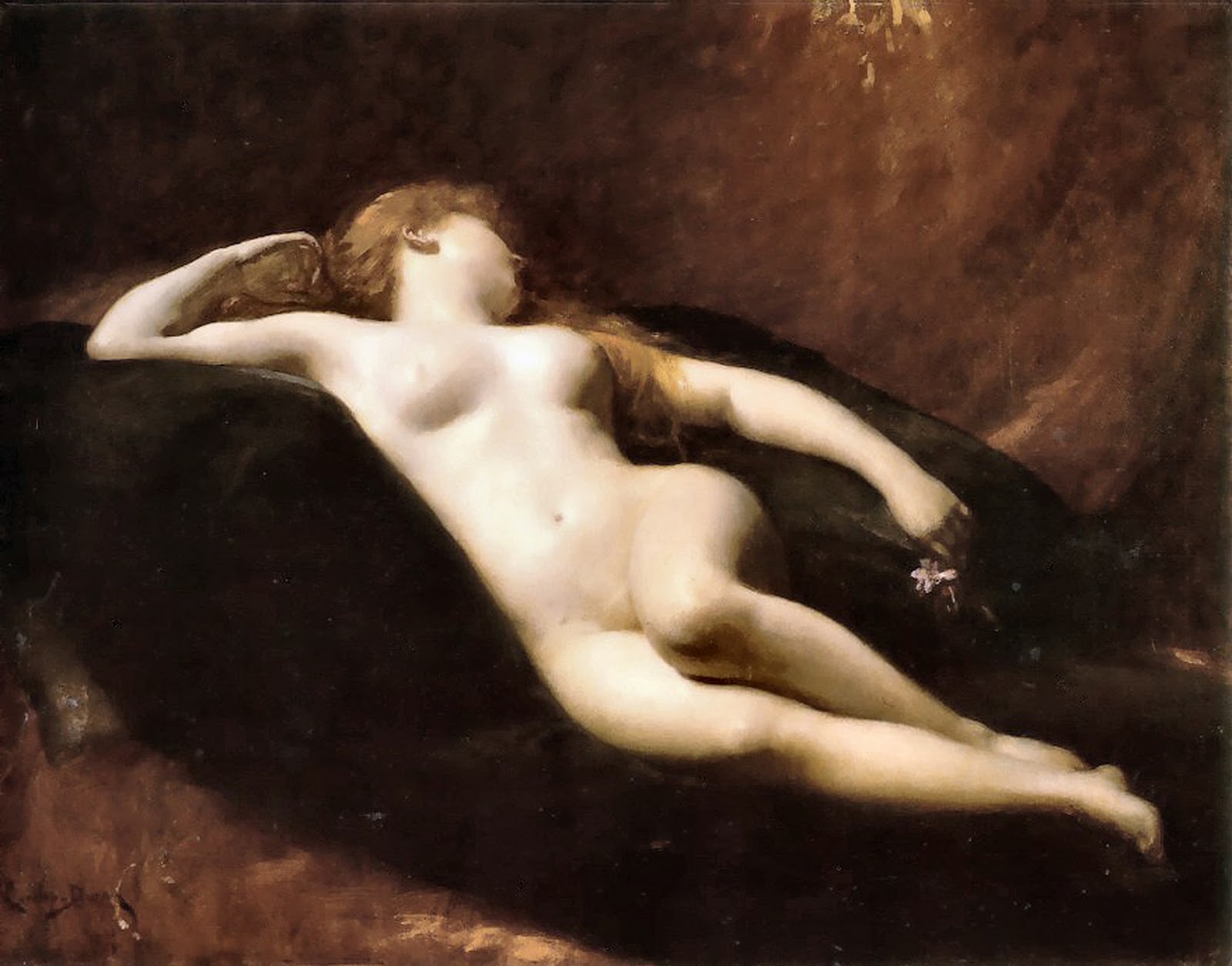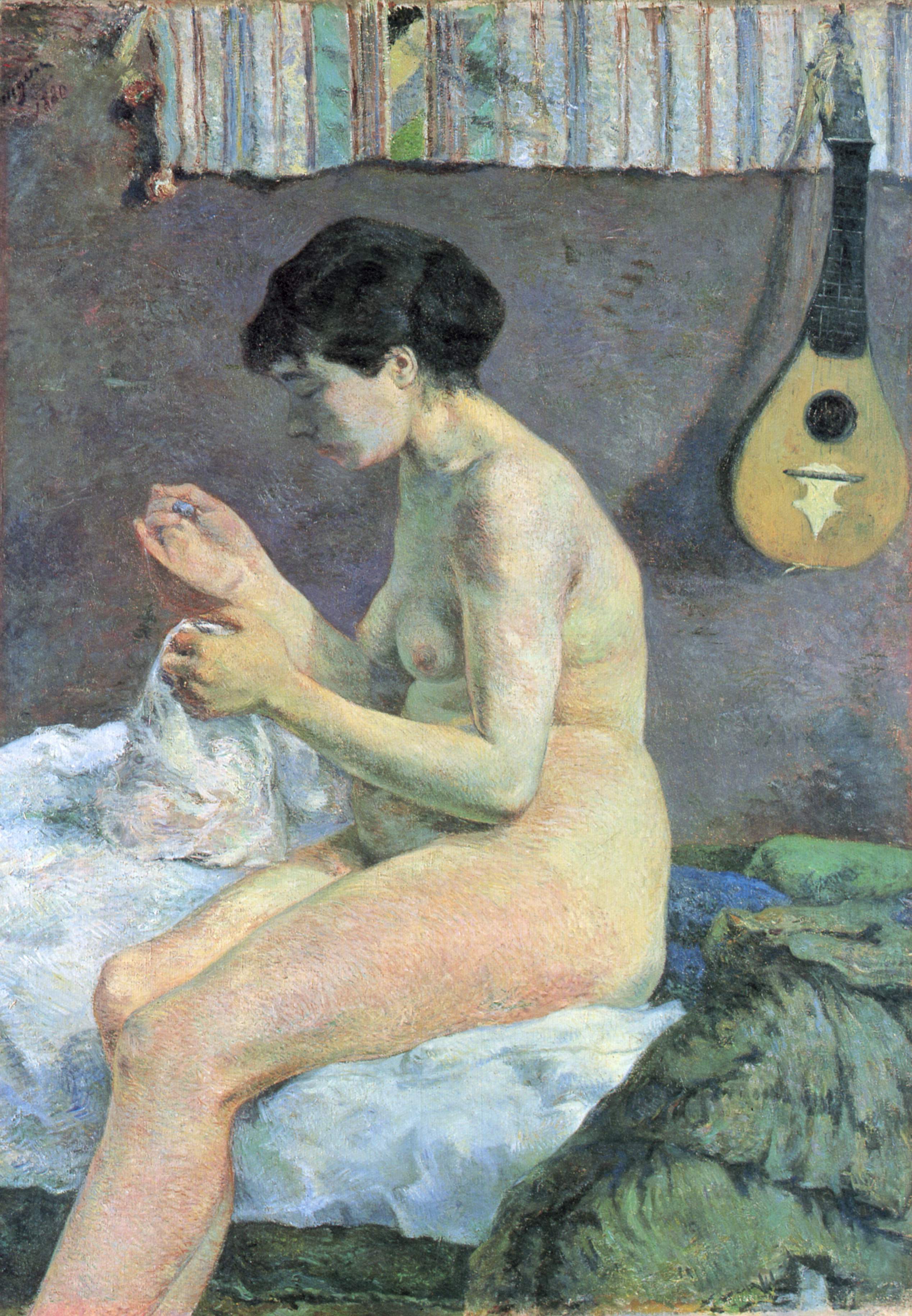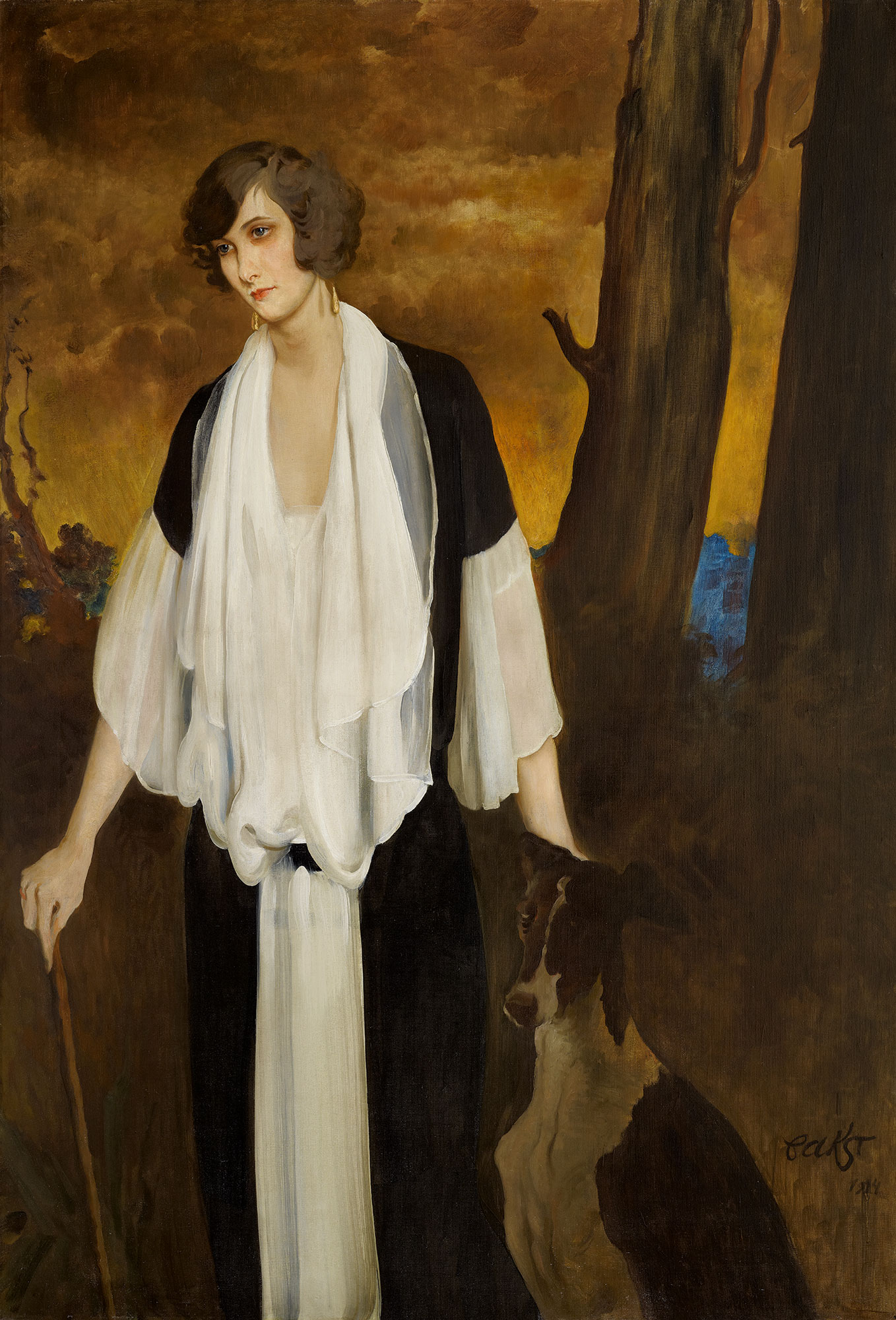|
ArsÃĻne Alexandre
ArsÃĻne Alexandre (16 August 1859 â 1 October 1937) was a French art critic. He was a contributor to ''L'ÃvÃĐnement'', ''Le Paris'' and ''L'Ãclair'' and in 1894 was one of the founders of the satirical journal ''Le Rire'', becoming its artistic director. He was later art critic for ''Le Figaro''. Alexandre and FÃĐlix FÃĐnÃĐon were the first to use the term 'pointillism', in 1886, and Alexandre alone coined the term 'the Rouen School', in 1902 in a catalogue to an exhibition of the work of Joseph Delattre at the galerie Durand-Ruel à Paris. He also wrote several articles for ''Le ThÃĐÃĒtre'', notably 'Le ThÃĐÃĒtre au Salon' in June 1898 and several theatre reviews. He was Inspecteur GÃĐnÃĐral des MusÃĐes during the World War I, First World War. Works * ''HonorÃĐ Daumier, l'homme et l'Åuvre'', H. Laurens, Paris, 1888 * ''Oeuvre d'Alphonse-Marie-Adolphe de Neuville, Alphonse de Neuville'', A. Lahure, 1889 * ''Antoine Louis Barye, A. L. Barye'', Librairie de l'Art, 1889 * '' ... [...More Info...] [...Related Items...] OR: [Wikipedia] [Google] [Baidu] |
Carolus-Duran
Charles Auguste Ãmile Durand, known as Carolus-Duran (4 July 1837 â 17 February 1917), was a French painter and art instructor. He is noted for his stylish depictions of members of Upper class, high society in French Third Republic, Third Republic France. Biography The son of a hotel owner, his first drawing lessons were with a local sculptor named Augustin-Phidias Cadet de BeauprÃĐ (1800â?) at the Academy of Lille, AcadÃĐmie de Lille; then took up painting with François Souchon, a student of Jacques-Louis David. He went to Paris in 1853, where he adopted the name "Carolus-Duran". In 1859, he had his first exhibition at the Salon (Paris), Salon. That same year, he began attending the AcadÃĐmie Suisse, where he studied until 1861. One of his early influences was the Realism (art), Realism of Gustave Courbet. From 1862 to 1866, he travelled to Rome and Spain, thanks to a scholarship granted by his hometown. During that time, he moved away from Courbet's style and became mor ... [...More Info...] [...Related Items...] OR: [Wikipedia] [Google] [Baidu] |
Adolphe-FÃĐlix Cals
Adolphe-FÃĐlix Cals (17 October 1810 â 3 October 1880) was a French portrait, genre, and landscape painter. Life and work AdolpheâFÃĐlix Cals was born into a poor family, yet his parents attempted to prevent him from performing manual labor. He initially trained as an engraver under Jean-Louis Anselin, who was a family friend. After Anselin died suddenly he went on studying engraving, first with Ponce, then under Bosc, before finally entering the atelier of LÃĐon Cogniet. Cogniet tried to mentor Cals in the direction of a more 'popular' style, although Cals disagreed. Cogniet argued that Cal's style would hurt his career, but Cals refused to give in. He parted company with his (neoclassical-influenced) teacher, owing to his teacher's lack of appreciation for the emerging impressionist movement in art. His career did in fact suffer, and it was not until he was much older that he reached any level of success. He became critically acclaimed at the 1846 Salon, despite receivin ... [...More Info...] [...Related Items...] OR: [Wikipedia] [Google] [Baidu] |
1859 Births
Events JanuaryâMarch * January 21 â JosÃĐ Mariano Salas (1797â1867) becomes Conservative interim President of Mexico. * January 24 ( O. S.) â Under the rule of Alexandru Ioan Cuza, the provinces of Wallachia and Moldavia are united under the jurisdiction of the Ottoman Empire. It would be a principal step in forming the modern state of Romania. * January 28 â The city of Olympia is incorporated in the Washington Territory of the United States of America. * February 2 â Miguel MiramÃģn (1832â1867) becomes Conservative interim President of Mexico. * February 4 â German scholar Constantin von Tischendorf rediscovers the '' Codex Sinaiticus'', a 4th-century uncial manuscript of the Greek Bible, in Saint Catherine's Monastery on the foot of Mount Sinai, in the Khedivate of Egypt and arranges for its presentation to his patron, Tsar Alexander II of Russia at Saint Petersburg. * February 14 â Oregon is admitted as the 33rd U.S. state. * February 12 â ... [...More Info...] [...Related Items...] OR: [Wikipedia] [Google] [Baidu] |
Beethoven
Ludwig van Beethoven (baptised 17 December 177026 March 1827) was a German composer and pianist. He is one of the most revered figures in the history of Western music; his works rank among the most performed of the classical music repertoire and span the Transition from Classical to Romantic music, transition from the Classical period (music), Classical period to the Romantic music, Romantic era. His early period, during which he forged his craft, is typically considered to have lasted until 1802. From 1802 to around 1812, his middle period showed an individual development from the styles of Joseph Haydn and Wolfgang Amadeus Mozart, and is sometimes characterised as heroic. During this time, Beethoven began to grow increasingly Hearing loss, deaf. In his late period, from 1812 to 1827, he extended his innovations in musical form and expression. Born in Bonn, Beethoven displayed his musical talent at a young age. He was initially taught intensively by his father, Johann van Bee ... [...More Info...] [...Related Items...] OR: [Wikipedia] [Google] [Baidu] |
Charles Pinet
Charles is a masculine given name predominantly found in English and French speaking countries. It is from the French form ''Charles'' of the Proto-Germanic name (in runic alphabet) or ''*karilaz'' (in Latin alphabet), whose meaning was "free man". The Old English descendant of this word was '' Äearl'' or ''Äeorl'', as the name of King Cearl of Mercia, that disappeared after the Norman conquest of England. The name was notably borne by Charlemagne (Charles the Great), and was at the time Latinized as ''Karolus'' (as in ''Vita Karoli Magni''), later also as '' Carolus''. Etymology The name's etymology is a Common Germanic noun ''*karilaz'' meaning "free man", which survives in English as churl (James (wikt:Appendix:Proto-Indo-European/Įĩerhâ-">Äer-, where the Ä is a palatal consonant, meaning "to rub; to be old; grain." An old man has been worn away and is now grey with age. In some Slavic languages, the name ''Drago (given name), Drago'' (and variants: ''Dragom ... [...More Info...] [...Related Items...] OR: [Wikipedia] [Google] [Baidu] |
Johannes Vermeer
Johannes Vermeer ( , ; see below; also known as Jan Vermeer; October 1632 â 15 December 1675) was a Dutch painter who specialized in domestic interior scenes of middle-class life. He is considered one of the greatest painters of the Dutch Golden Age. During his lifetime, he was a moderately successful provincial genre painter, recognized in Delft and The Hague. He produced relatively few paintings, primarily earning his living as an art dealer. He was not wealthy; at his death, his wife was left in debt. Vermeer worked slowly and with great care, and frequently used very expensive pigments. He is particularly renowned for making masterful use of light in his work. "Almost all his paintings", Hans Koningsberger wrote, "are apparently set in two smallish rooms in his house in Delft; they show the same furniture and decorations in various arrangements and they often portray the same people, mostly women." The modest celebrity he enjoyed during his life gave way to obscurity ... [...More Info...] [...Related Items...] OR: [Wikipedia] [Google] [Baidu] |
Emile Friant
Emile or Ãmile may refer to: * Ãmile (novel) (1827), autobiographical novel based on Ãmile de Girardin's early life * Emile, Canadian film made in 2003 by Carl Bessai * '' Emile: or, On Education'' (1762) by Jean-Jacques Rousseau, a treatise on education; full title ''Ãmile ou de l'education'' People * Emile (producer), American hip hop producer Emile Haynie * Emil (given name), includes people and characters with given name Emile or Ãmile * Barbara Emile, British television producer * Chris Emile, American dancer * Jonathan Emile, stage name of Jamaican-Canadian singer, rapper and record producer Jonathan Whyte Potter-MÃĪl (born 1986) * Yonan Emile, Iraqi Olympic basketball player * Emile Witbooi. South African soccer player See also * Emil (other) Emil may refer to: Literature *''Emil and the Detectives'' (1929), a children's novel *"Emil", nickname of the Kurt Maschler Award for integrated text and illustration (1982â1999) *''Emil i LÃķnneberga'', a ... [...More Info...] [...Related Items...] OR: [Wikipedia] [Google] [Baidu] |
Bernheim-Jeune
Bernheim-Jeune gallery is one of the oldest art galleries in Paris. Opened on Rue Laffitte in 1863 by Alexandre Bernheim (1839-1915), friend of Delacroix, Corot and Courbet, it changed location a few times before settling on Avenue Matignon. The gallery promoted realists, Barbizon school paintings and, in 1874, the first impressionist and later Post-Impressionist painters. It closed in 2019. History In 1901, Alexandre Bernheim, with his sons, Josse (1870â1941), and Gaston (1870â1953), organized the first important exhibition of Vincent van Gogh paintings in Paris with the help of art critic Julien Leclercq. In 1906, ''Bernheim-Jeune frÃĻres'' started presenting works by Pierre Bonnard, Ãdouard Vuillard, Paul CÃĐzanne, Henri-Edmond Cross, Kees van Dongen, Henri Matisse, Le Douanier Rousseau, Raoul Dufy, Maurice de Vlaminck, Amedeo Modigliani, Maurice Utrillo and Georges DufrÃĐnoy. From 1906 to 1925, art critic FÃĐlix FÃĐnÃĐon was the director of the gallery and ... [...More Info...] [...Related Items...] OR: [Wikipedia] [Google] [Baidu] |
Paul Gauguin
EugÃĻne Henri Paul Gauguin (; ; 7 June 1848 â 8 May 1903) was a French painter, sculptor, printmaker, ceramist, and writer, whose work has been primarily associated with the Post-Impressionist and Symbolist movements. He was also an influential practitioner of wood engraving and woodcuts as art forms. While only moderately successful during his life, Gauguin has since been recognized for his experimental use of color and Synthetist style that were distinct from Impressionism. Gauguin was born in Paris in 1848, amidst the tumult of Europe's revolutionary year. In 1850, Gauguin's family settled in Peru, where he experienced a privileged childhood that left a lasting impression on him. Later, financial struggles led them back to France, where Gauguin received formal education. Initially working as a stockbroker, Gauguin started painting in his spare time, his interest in art kindled by visits to galleries and exhibitions. The financial crisis of 1882 significantly impact ... [...More Info...] [...Related Items...] OR: [Wikipedia] [Google] [Baidu] |
Botticelli
Alessandro di Mariano di Vanni Filipepi ( â May 17, 1510), better known as Sandro Botticelli ( ; ) or simply known as Botticelli, was an Italian painter of the Early Renaissance. Botticelli's posthumous reputation suffered until the late 19th century, when he was rediscovered by the Pre-Raphaelites who stimulated a reappraisal of his work. Since then, his paintings have been seen to represent the linear grace of late Italian Gothic and some Early Renaissance painting, even though they date from the latter half of the Italian Renaissance period. In addition to the mythological subjects for which he is best known today, Botticelli painted a wide range of religious subjects (including dozens of renditions of the ''Madonna and Child'', many in the round tondo shape) and also some portraits. His best-known works are '' The Birth of Venus'' and '' Primavera'', both in the Uffizi in Florence, which holds many of Botticelli's works.. Botticelli lived all his life in the same ne ... [...More Info...] [...Related Items...] OR: [Wikipedia] [Google] [Baidu] |
Vladimir De Terlikowski
Wladimir de Terlikowski or WÅodzimierz Terlikowski (1873â1951) was a Polish painter mainly active in France. Life Born to a noble family near Warsaw, he discovered art on several trips to France, Italy, Spain, Germany, Switzerland and North Africa. After short periods studying in the academy of fine arts in Munich and the Parisian studio of Jean-Paul Laurens, Terlikowski's first works were close to Fauvism and got him noticed by the galerie Galerie Bernheim-Jeune. Terlikowski set up a studio in Montparnasse, where he was a contemporary of Modigliani, Soutine, Picasso, Derain and Vlaminck. Exhibitions * Exposition WÅadimir de Terlikowski (21 April â 3 May 1913), Chez MM Bernheim-Jeune * L'art polonais en France, paysages du Morbihan (20 November â 2 December 1916), Chez MM Bernheim-Jeune * Exposition W. de Terlikowski: Venise, Paris, Provence - Hotel Charpentier - 21 April â 19 May 1927 * Wladimir de Terlikowski: MayâJune 1981, Troyes, Centre culturel Thibaud de ... [...More Info...] [...Related Items...] OR: [Wikipedia] [Google] [Baidu] |
LÃĐon Bakst
LÃĐon (Lev) Samoylovich Bakst (), born Leyb-Khaim Izrailevich Rosenberg (; â 27 December 1924),"Bakst, Leon" by Maarten Wurfbain, in ''The Dictionary of Art'' (Grove Press, 1998) p.86"Bakst Lev Samoilovich" by V. A. Kulakov, ''Great Russian Encyclopedia'' online was a Russian painter and scene and er of Jewish origin. He was a member of the |






